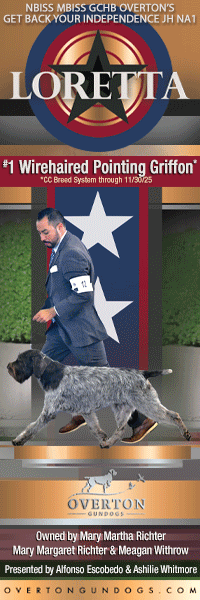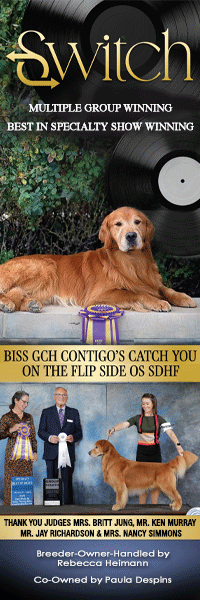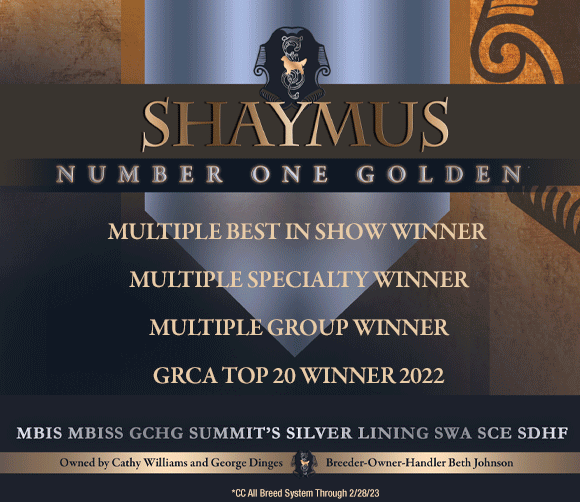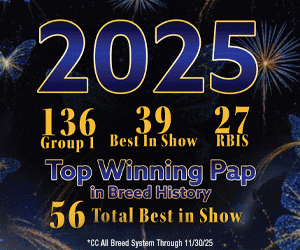The Worst Westminster
By Amy Fernandez
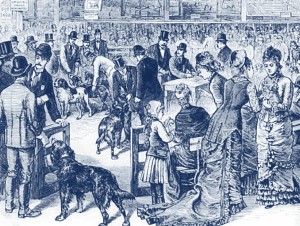 By 1884 club members felt quite confident. For the first and last time in Westminster history, they staged two shows. The first, May 6-9, followed the all-breed format, with the fall show limited to Non-Sporting breeds. They never tried it again, which implies the success of that plan.
By 1884 club members felt quite confident. For the first and last time in Westminster history, they staged two shows. The first, May 6-9, followed the all-breed format, with the fall show limited to Non-Sporting breeds. They never tried it again, which implies the success of that plan.
The club was still at the train depot, which was fine the previous year. But early May is unpredictable. That entire week was cold and crummy, with wind and rain blasting through the drafty old building.
The second day of Times coverage described backstage mayhem saying, “animals arrived quite late, and, having come through the driving rain were dripping wet, so that their attendants had to spend several hours rubbing them dry and smoothing their coats.” There were no dryers back then. “More than a thousand canine voices (1114 precisely) wailed aloud in Madison Square Garden yesterday morning when the canines found that the weather, instead of the traditional sunshine and balm of May, was still a howling blast of driven rain and northeast wind. Madison Square Garden is an airy structure and the chill winds found their way through the chinks into the kennels where the dogs curled up and shivered in the corners.” Sounds pitiful but it didn’t deter spectators, “and the managers of the show had beaming countenances.”
Modern metrics cannot be applied to breed and class divisions, but Irish Setters and St. Bernards continued to dominate. Saints drew 95 entries, meriting 18 classes and an entire day of judging. The legendary Bonivard triumphed again. Mastiffs, with 39 entries, also drew mobs of fans. Giant breeds ensured brisk box office sales and a favorite pastime seemed to be teasing the biggest dogs, with predictable results. (AKC biting rules were far in the future.)Despite the show committee’s constant admonitions, spectators continued to handle and feed the benched dogs. The Times noted that a particularly lovely pair of Yorkies “had received nearly enough candy to almost kill them.” Apparently, show security consisted of hiring boys small enough to fit into the dog kennels. Westminster required all entries to be benched all four days. There were not many rules about anything.
The Times said, “One Pug lies in a champagne case elegantly upholstered in quilted satin. Across the lining of the lid, which stands open, runs a black band bearing the words: A case of whine. The dog looked as if it was crushed by the weight of the pun.” AKC was also a long way from ejecting the Xolo–which was eventually readmitted–and the famous Mee Too enthralled spectators although his appearance was eclipsed by the grandeur of his neighbor, the Italian Greyhound, Queenie. Age two and imported straight from Italy, she wasn’t suffering. “Her kennel is hung with maroon plush decorated with hand painted flowers and small Roman curtains. Queenie herself reposes on a large pillow of bright blue plush ornamented with a bow of blue satin. Queenie’s aristocratic neck is encircled twice by a band of twisted gold and a coat of rich material surrounds her glossy body. In consideration of the coldness, she also has a camel hair blanket.” The Times added that Queenie slept most of the time.
Gundogs were the main attraction. Although retired, Sensation was there. “The display of pointers and setters is large and fine. The Westminster Kennel Club has a row of neat iron-railed kennels just left of the entrance set up for their prize Pointers…They are not entered for competition but are worth looking at, and found many admirers yesterday.” It’s important to note that AKC hadn’t yet defined conflict of interest relationships–but those came thick and fast after this show because it was all about Pointers, specifically the anticipated challenge between Meteor and Beaufort and the money rapidly changing hands regarding that outcome.
Well before judging it had a secondary impact at the show, “Prices were appended to the description of most of the entries in the catalogue”, and those numbers climbed in tandem with the publicity–up to $10,000. Twelve Pointer classes offered up to $25 to winners, which became a running joke alongside the fast and furious ringside betting. Various reports calculated another $10,000 to $25,000 changing hands during judging and every dime on one class, Pointer dogs over 55 pounds. “The great contest lay between Meteor and Beaufort”, definitely an understatement. Meteor, an import owned by J.W. Munson of St. Louis, boasted a nice record. His equally successful opponent, Beaufort, was owned by the acerbic and prolific critic of the sport, Charles Mason.
“The owners of these two dogs were full of rivalry. The English dog was a firm favorite with all the Englishmen and imitation Englishmen in and around the Garden. The American dog was a thorough favorite with all the Americans. The owners of the two dogs backed their opinions in a substantial manner.” After three days, the combination of intense publicity, personal rivalry and so much money guaranteed a bombshell no matter how it went.
None of this was lost on the judge, Mr. E.C. Sterling, who already demonstrated zero sense of judgment by accepting the assignment. Yes, he was also from St. Louis and also from the same St. Louis kennel club. That raised questions but it was the sheer number of dogs Sterling and Munson had co-bred and co-owned that really brought the house down. The famously direct Watson said, “Beaufort was immeasurably the best dog in that very strong class and Croxeth the next best.” Sterling’s choice, Meteor, didn’t even merit a third place in his opinion. Guess who won?
The thing exploded into embarrassing, frequently outlandish vitriol to match any current internet trash–although every remark required writing and mailing. The ‘Pointer Protest’ earned notoriety far outside the sport by October when Westminster’s second show rolled around. At least that was limited to Non-Sporting breeds.
Short URL: https://caninechronicle.com/?p=261461
Comments are closed






